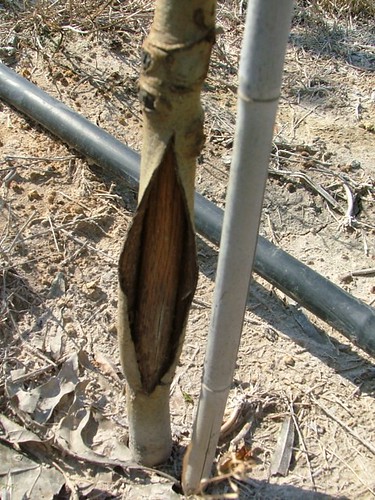Horticulturists expect widespread bark split, bark death in thin-barked woody plants
By Tracy Courage
U of A System Division of Agriculture
Nov. 27, 2019
Fast facts
- Thin-barked woody plants will likely suffer damage next year as a result of November’s freezing temps
- Experts predict widespread bark splitting and bark death among azaleas, crape myrtles and other thin-barked woody plants
(269 words)
(Download this story in MS Word format here.)
LITTLE ROCK – Azaleas, crape myrtles, Japanese maples and other thin-barked woody plants may be in for a rough year in 2020.
Horticulture experts with the University of Arkansas System Division of Agriculture Cooperative Extension Service predict that the recent mid-November freeze will take a toll next year on thin-barked woody plants, whose stems had not fully hardened.
“We won’t know the extent of damage until the spring,” said Jim Robbins, an extension horticulture expert for the Division of Agriculture specializing in ornamentals. “We predict next spring we will see a ton of severe bark death.”
Temperatures in much of Arkansas plummeted by 20 to 30 degrees in a matter of hours on Nov. 11. In some areas of the states, temperatures dropped below 20 degrees Fahrenheit.
“Northern Arkansas had already had a frost, so they were further along in the dormancy season than central and southern Arkansas,” Robbins said.
Damage will likely be more prevalent in central and southern Arkansas where woody plants were still actively growing when the Nov. 11 freeze hit. Because the plants had not gone dormant, their vascular systems were still loaded with water at the time.
“We predict with high certainty that in early May, we're going to see a lot of woody plants that have a thin bark that are either going to struggle to leaf out and collapse, or we’ll see the bark splitting,” he said. “We can trace it back to this unprecedented period we just went through.”
To learn about extension programs in Arkansas, contact your local Cooperative Extension Service agent or visit www.uaex.uada.edu. Follow us on Twitter at @AR_Extension.
About the Division of Agriculture
The University of Arkansas System Division of Agriculture’s mission is to strengthen agriculture, communities, and families by connecting trusted research to the adoption of best practices. Through the Agricultural Experiment Station and the Cooperative Extension Service, the Division of Agriculture conducts research and extension work within the nation’s historic land grant education system.
The Division of Agriculture is one of 20 entities within the University of Arkansas System. It has offices in all 75 counties in Arkansas and faculty on five system campuses.
Pursuant to 7 CFR § 15.3, the University of Arkansas System Division of Agriculture offers all its Extension and Research programs and services (including employment) without regard to race, color, sex, national origin, religion, age, disability, marital or veteran status, genetic information, sexual preference, pregnancy or any other legally protected status, and is an equal opportunity institution.
# # #
Media Contact: Tracy Courage
Dir. of Communication Services
U of A System Division of Agriculture
Cooperative Extension Service
(501) 671-2126
tcourage@uada.edu
